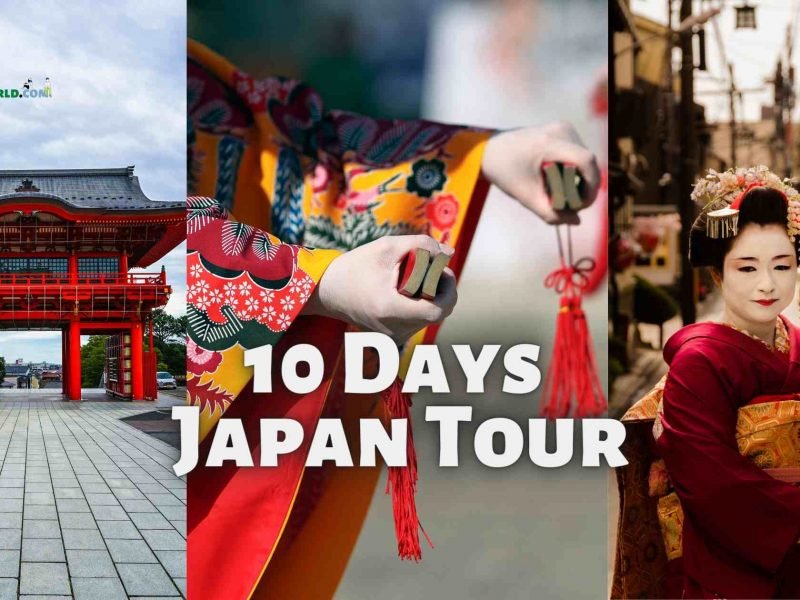About Isuien Garden
The Isuien Garden is a traditional Japanese garden that can be found in the city of Nara in the country of Japan. It is a well-liked vacation spot that draws a lot of visitors thanks to its stunning architecture, serene ambiance, and important role in history. The garden was first constructed in the late 17th century as a private garden for a wealthy merchant, and it was not until the middle of the 19th century that it was made available to the general public.
Isuien Garden is divided into two primary areas, known respectively as the front garden (Minami Shin-en) and the rear garden (Kita Shin-en), with each section including its own set of distinctive characteristics and components of design. In the front garden there is a pond, a waterfall, and a tea house. In the back garden there is a bamboo grove, a little stream, and a variety of cherry blossom and Japanese maple trees.
The garden is meticulously planned and cared for in order to demonstrate the fundamentals of traditional Japanese garden design, such as equilibrium, harmony, and the allure of nature. Visitors to Nara who are looking for a serene escape and an experience that allows them to appreciate the natural and cultural splendor of Japan frequently make their way to this location.
The government of Japan has designated the Isuien Garden as a National Site of Scenic Beauty, and during the course of its history, the garden has been subjected to a number of reconstructions and restorations in order to preserve both its aesthetic value and its cultural relevance. The garden welcomes guests throughout the year and provides a tranquil and picturesque setting ideal for reflection, relaxation, and appreciating the aesthetic value of traditional Japanese garden design.
Hisotry timeline of Isuien Garden
Here is a brief history timeline of Isuien Garden:
Late 17th century: Isuien Garden is first established as a private garden by a wealthy merchant in Nara, Japan.
Early 19th century: The garden is expanded and renovated by the owner, incorporating traditional Japanese garden design principles and elements such as a pond, a tea house, and stone lanterns.
Mid-19th century: The garden is purchased by a local government official and opened to the public for the first time.
1969: Isuien Garden is designated as a National Site of Scenic Beauty by the Japanese government.
1994: The garden undergoes a major renovation and restoration project to repair damage caused by years of natural disasters and aging.
Present: Isuien Garden remains a popular destination for visitors to Nara, offering a beautiful and tranquil space for relaxation, contemplation, and appreciation of traditional Japanese garden design.
Today, the garden features two main sections – the front garden (Minami Shin-en) and the rear garden (Kita Shin-en) – each with its own unique features and design elements. The garden is home to a variety of plants and trees, including cherry blossom trees, Japanese maple trees, and bamboo, and is known for its serene atmosphere and beautiful scenery.
How to reach Isuien Garden
Isuien Garden is located in the city of Nara, Japan. Here are a few ways to reach the garden:
Isuien Garden By train: The garden is a 20-minute walk from Nara Station. Nara Station is accessible via the JR Yamatoji Line, Kintetsu Nara Line, and the Sakurai Line.
Isuien Garden By bus: Take a bus to the Isuien-mae bus stop. The bus stop is served by the Nara City Loop Bus and the Kintetsu Bus Line.
Isuien Garden By taxi: Taxis are available at Nara Station and other locations throughout the city. The ride from Nara Station to the garden takes about 10 minutes.
Isuien Garden On foot: If you’re already in the city of Nara, Isuien Garden is about a 15-20 minute walk from Nara Park or Todaiji Temple.
Overall, Isuien Garden is located in a convenient area of Nara and is easily accessible by various modes of transportation.
Do's and Dont's at Isuien Garden
Here are some do’s and don’ts to keep in mind when visiting Isuien Garden in Nara, Japan:
Do’s:
- Do take your time to appreciate the natural beauty and tranquility of the garden.
- Do remove your shoes before entering the tea house.
- Do follow the designated paths and stay on the designated walkways.
- Do dispose of your trash properly in the designated trash cans.
Don’ts:
- Don’t touch or climb on any of the structures, sculptures, or plants in the garden.
- Don’t disturb the wildlife or fish in the pond.
- Don’t eat or drink in the garden.
- Don’t use flash photography inside the tea house.
It’s important to be respectful of the garden’s natural beauty and cultural significance, so please follow these guidelines when visiting Isuien Garden.
Highlights of Isuien Garden
Isuien Garden is a beautiful and tranquil Japanese garden with many highlights to explore. Here are some of the key highlights of the garden:
- Kita Shin-en: The rear garden, which features a bamboo grove, a small stream, and a variety of cherry blossom and Japanese maple trees.
- Minami Shin-en: The front garden, which features a pond, a waterfall, and a tea house.
- Tea house: A traditional Japanese tea house located in the front garden, where visitors can enjoy matcha tea and traditional Japanese sweets while taking in the serene surroundings.
- Historic buildings: The garden includes several historic buildings, including the former residence of the garden’s original owner, which has been converted into a museum.
- Stone lanterns: The garden features many beautiful stone lanterns of various sizes and designs, which add to the peaceful ambiance of the garden.
- Seasonal beauty: The garden’s design is carefully crafted to showcase the natural beauty of each season. In the spring, visitors can enjoy the cherry blossoms, while in the fall, the Japanese maples turn brilliant shades of red and orange.
Overall, Isuien Garden is a must-visit destination for anyone interested in traditional Japanese garden design and natural beauty. Whether you’re looking for a peaceful retreat or a chance to explore the rich cultural history of Japan, Isuien Garden has something to offer.








Comment (0)